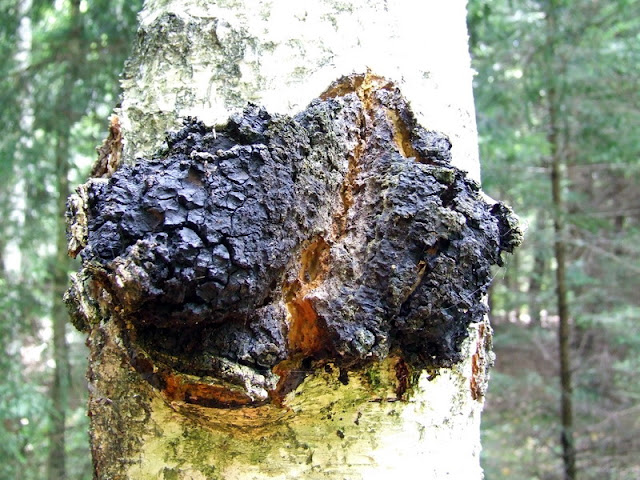What Are Chaga Mushrooms and Are They Healthy?
Some types of fungus are unattractive and Chaga mushrooms are not only unattractive they are actually a parasite on birch trees that grow throughout the northern hemisphere including Connecticut. Chaga has been widely used medicinally around the world for centuries in Poland, Russia, and in North America by Native Americans.
About Chaga Mushrooms
Inonotus obliquus or the Chaga mushroom is usually found on standing birch trees. It is a type of shelf mushroom, bracket fungi, or polypore because it protrudes from a tree trunk. This mushroom looks like a large black crusty material that thrusts itself through the tree's bark. At this asexual stage, known as "sclerotium" the fungus resembles charcoal. It lives in this form as long as the tree lives and causes a fibrous white rot in the center cylinder of the tree. The later reproductive stage appears after the tree has died when a patch of white then brown poroid substance appears under the bark. This brown substance is cork-like and is called "good medicine." In Cree regions, it is called posakan. It can live up to twenty years on a host tree and is found throughout the Northern hemisphere. When the tree finally dies, both the host tree and Chaga die together. The texture that is like cork requires an extraction process for its compounds to be useful and consumed.
Traditionally the rusty brown inner layers of this mushroom have been used for medicine and in ceremonies. Cree healers call Chaga Wiskakecakomikilh, a mythological being who threw a scab that was mistaken for a piece of dried meat against a birch tree. This resulted in the first Chaga mushroom. The Cree used dried Chaga in a smoking pipe ceremony because it produced a sweet-smelling smoke. The Cree, Ojibway, the Denesuline peoples of Norhern Saskatchewan, and the Gitksan of British Columbia use Chaga to treat rheumatic and joint pain and toothaches. The Denesuline would create two long lines of powdered Chaga and light each line from opposite ends. Whichever line burned through first signified what event would happen first. The Cree also used the Chaga mushroom as a fire starter. The Gitksan would take a sliver of the black coal from the birch tree and burn it for joint pain. The Tenaina of South-Central Alaska use Chaga to relieve toothaches.
The first documentation of therapeutic use was in the 12th century in Eastern Europe.
From historical chronicles, it is known that Kiev Prince (Knyaz) Vladimir Monomakh had a lip tumor and got rid of the disease thanks to treatment with Chaga mushroom.
In the middle of the 20th century, Changa was still used in Siberia for its properties by Russian farmers and workers too poor to buy tea: they crushed it and drank it as an infusion.
During WWII people in Finland used Chaga as a substitute for coffee.
In Aleksandr Solzhenitsyn's novel, Cancer Ward, Chaga is mentioned as a medicinal treatment for cancer.
The hot beverage made from Chaga mushrooms is said to taste similar to an combination of coffee and chocolate with a hint of wintergreen.
Chaga mushrooms are high in antioxidants.



Comments
Post a Comment